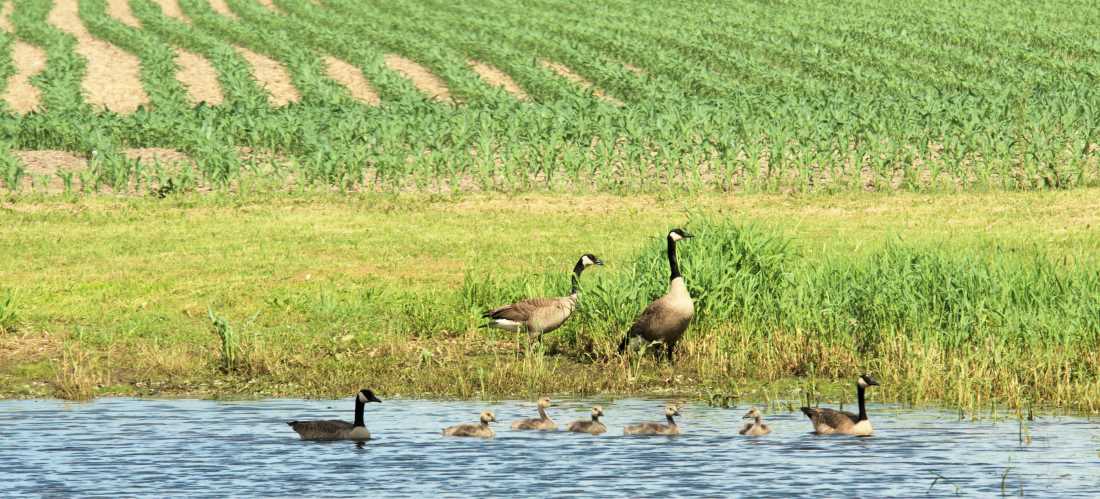
Canada geese are more than a noisy nuisance—they can cause serious damage to crops. Farmers have few options to keep them away, but a Lehigh undergraduate spent last summer working on a high-tech solution.
Using computer vision and machine learning, Tyreese Davidson ’26 helped develop a lightweight AI detection model to distinguish geese from similar birds like ducks and swans. When the system identifies a goose, it activates an alarm to scare the animal away—like a modern-day scarecrow, but smarter.
Davidson, a student in Lehigh’s Computer Science and Business (CSB) program, conducted the research over the summer as part of the STEM Summer Institutes, or STEM-SI. The 10-week initiative connects undergraduates with hands-on research opportunities, often in collaboration with faculty, PhD students, and fellow undergrads. Among the program’s goals are growing a broader community of STEM scholars across the university, developing students’ professional skills, and expanding awareness of academic and career paths in these fields.
Davidson was matched with a project led by Mooi Choo Chuah, a professor of computer science and engineering and an associate director of Lehigh’s Institute for Data, Intelligent Systems, and Computation (I-DISC), working alongside PhD students to build the AI-powered “scare-geese” system. Davidson’s primary focus was on training the detection model.
“We had to make sure it was able to recognize the geese so when it saw them the alarm would trigger to scare them away,” he says. “It would scan and take a picture, and then based on that AI model, the system would compare it to other known images of geese. If it matched, the alarm would be triggered.”
The model was trained on 5,959 annotated images of birds, with performance measured by accuracy and precision across different species. Davidson’s work involved preparing and evaluating the system using validation data and loss/accuracy metrics.
It was his first time conducting research at this level, and the experience proved both challenging and rewarding.
“I felt supported throughout the STEM-SI experience,” he says. “My professor held weekly meetings, along with the PhD students, where we talked about my progress and what I could improve on. There was also another research student sharing the experience, so I wasn’t alone. We were able to talk through problems and find solutions together.”
As a first-year student, Davidson initially joined Lehigh’s Rapidly Accelerated Research Experience (RARE) program, which helps students from groups underrepresented in STEM fields get started in research. That led him to STEM-SI, where he was encouraged to continue building on those skills.
“It gives undergraduates the opportunity to pursue research in many different fields,” he says. “Overall, it is really cool because it can open the door if you want to do graduate studies—or even just take the first step into research.”
The scare-geese project gave Davidson more than new technical skills. It gave him a sense of impact, a confidence boost—and a new hobby.
“I actually found a passion for bird watching along the way,” he says.
—Rebecca Caporaso ’28 is a student writer for the P.C. Rossin College of Engineering and Applied Science


